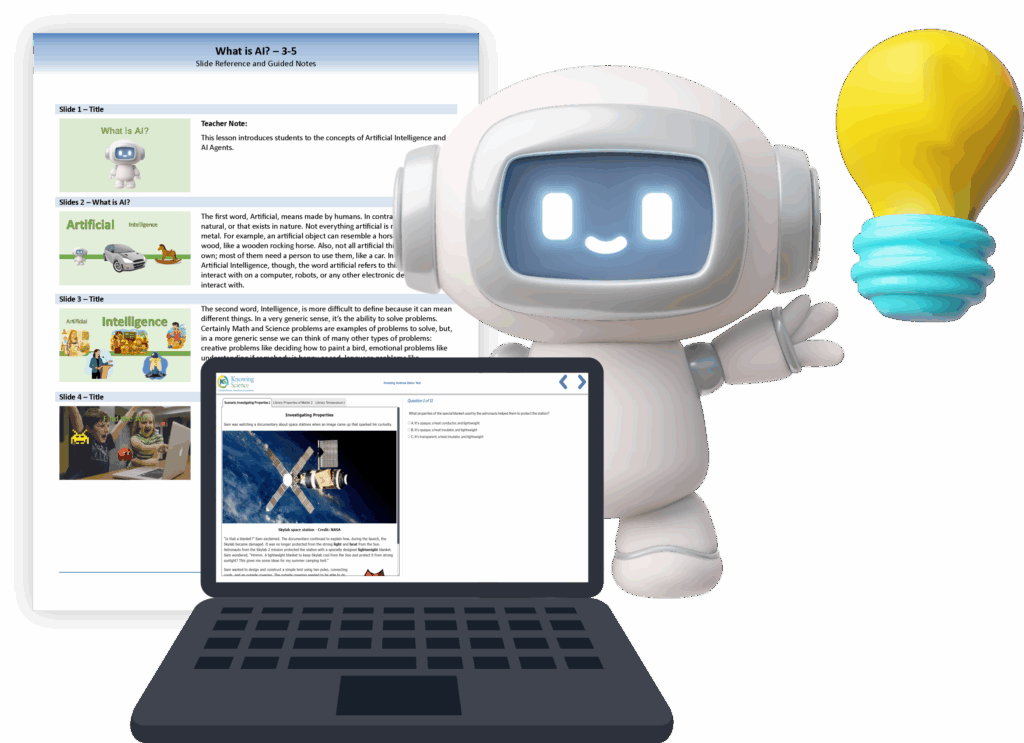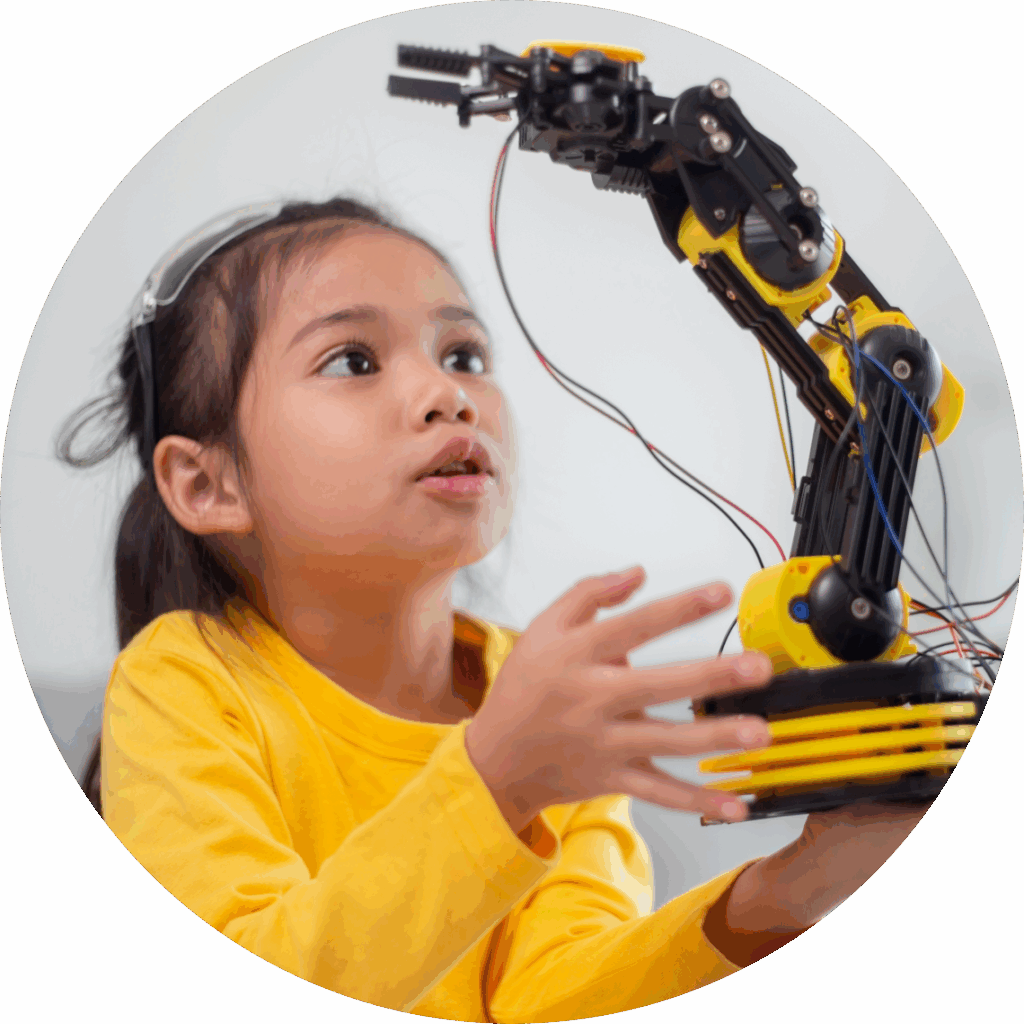
Educating students about AI in elementary and middle school
The world is entering a new age with artificial intelligence. Personal computers, smartphones, and the internet are only precursors for this emerging new technology.
Yet, while the K-12 curricula in many states include Computer Science, they typically have little or no coverage of AI. It is essential that students become conversant in a technology that is changing the world, much like personal computers did a generation ago.
Through collaborative, hands-on lessons, Empowering Science provides young students with a basic understanding of AI – how the technology works, its ability to tackle incredibly complex problems and tasks, and its possibilities. Using the Science and Engineering practices from the Next Generation Science Standards (NGSS), Empowering Science has created multidisciplinary lessons for elementary school students.


Mini Lessons
The Empowering Science mini lessons are presented using PowerPoint slides, videos, and pre- and post-assessments. The lessons have been created for grades K-2, grades 3-5, and middle school.
How does Empowering Science engage students to learn about AI?
Our concise, 15 minute lessons are designed to fit into a teacher’s busy schedule. Students are engaged by using research-proven methods of teaching that include:
Active Learning Strategies
Through the use of active
learning strategies, students
engage in learning by
thinking, discussing,
investigating, and creating.
Online Questions & Guided Investigations
Through the use of digital
investigations, teachers
can supervise students as
they engage in active, self-directed learning.
Group Discussion & Collaborative Work
Students engage in
discussions to construct
explanations, design
solutions, and support
arguments with evidence.
What can we learn from the Next Generation Science Standards (NGSS) when teaching about AI?
Computer Science is inherently multidisciplinary, drawing on concepts from science, mathematics, and engineering. To effectively understand and use emerging technologies like artificial intelligence, students need a foundation built on this interdisciplinary approach.
Empowering Science offers a comprehensive way to teach Computer Science—and AI in particular—by applying the principles outlined in A Framework for K–12 Science Education.
From an early age, students are encouraged to think and act like scientists and engineers. Collaborative work, problem-solving, and idea sharing not only build critical skills but also prepare students for the demands of the 21st-century economy. These essential competencies are developed through the Science and Engineering Practices, which are fully integrated into Empowering Science lessons:
- Asking questions and defining problems
- Developing and using models
- Planning and carrying out investigations
- Analyzing and interpreting data
- Using mathematics and computational thinking
- Constructing explanations and designing solutions
- Engaging in argument from evidence
- Obtaining, evaluating, and communicating information

“The actual doing of science or engineering can also pique students’ curiosity, capture their interest and motivate their continuous study; the insights thus gained helped them recognize that the work of scientists and engineers is a creative endeavor – one that has deeply affected the world they live in.”
From Page 42, Emphasis added
A Framework For K – 12 Science Education Practices, Crosscutting Concepts,
and Core Ideas, National Research Council of the National Academies, 2012
Why are hands-on activities important in learning about AI?

Hands-on activities foster creativity, promote teamwork, and help students develop essential problem-solving skills applicable in any setting. When it comes to learning about computers in elementary and middle school, there’s no better approach than engaging students in building simple circuits, exploring the first successful binary communication system—Morse Code—and progressing to basic logic circuits using parallel wiring. These foundational experiences make abstract concepts more tangible and pave the way for understanding more complex ideas like artificial intelligence.
How are Empowering Science lessons unique?
Engaging elementary students means connecting foundational concepts to their everyday experiences. Empowering Science lessons stand out by building computer science understanding through simple, enjoyable activities. Students work collaboratively in teams, supporting one another as they learn, while the teacher takes on the role of a learning coach. The lessons are divided into two sets: first, establishing the foundational knowledge needed to understand how computers work, and then introducing the core concepts of artificial intelligence.

